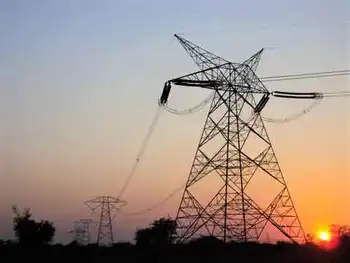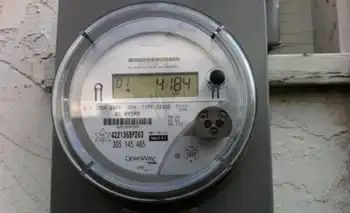Homeowners finding solar is now more affordable
But the cost of solar panels has plunged lately, changing the economics for many homeowners. Mr. Hare ended up paying $77,000 for a large solar setup that he figures might have cost him $100,000 a year ago.
“I just thought, ‘Wow, this is an opportunity to do the most for the least,’ ” Mr. Hare said.
For solar shoppers these days, the price is right. Panel prices have fallen about 40 percent since the middle of last year, driven down partly by an increase in the supply of a crucial ingredient for panels, according to analysts at the investment bank Piper Jaffray.
The price drops — coupled with recently expanded federal incentives — could shrink the time it takes solar panels to pay for themselves to 16 years, from 22 years, in places with high electricity costs, according to Glenn Harris, chief executive of SunCentric, a solar consulting group. That calculation does not include state rebates, which can sometimes improve the economics considerably.
American consumers have the rest of the world to thank for the big solar price break.
Until recently, panel makers had been constrained by limited production of polysilicon, which goes into most types of panels. But more factories making the material have opened, as have more plants churning out the panels themselves — especially in China.
“A ton of production, mostly Chinese, has come online,” said Chris Whitman, the president of U.S. Solar Finance, which helps arrange bank financing for solar projects.
At the same time, once-roaring global demand for solar panels has slowed, particularly in Europe, the largest solar market, where photovoltaic installations are forecast to fall by 26 percent this year compared with 2008, according to Emerging Energy Research, a consulting firm. Much of that drop can be attributed to a sharp slowdown in Spain. Faced with high unemployment and an economic crisis, Spain slashed its generous subsidy for the panels last year because it was costing too much.
Many experts expect panel prices to fall further, though not by another 40 percent.
Manufacturers are already reeling from the price slump. For example, Evergreen Solar, which is based in Massachusetts, recently reported a second-quarter loss that was more than double its loss from a year earlier.
But some manufacturers say that cheaper panels could be a good thing in the long term, spurring enthusiasm among customers and expanding the market.
“It’s important that these costs and prices do come down,” said Mike Ahearn, the chief executive of First Solar, a panel maker based in Tempe, Ariz.
First Solar recently announced a deal to build two large solar arrays in Southern California to supply that region’s dominant utility. But across the United States, the installation of large solar systems — the type found on commercial or government buildings — has been hurt by financing problems, and is on track to be about the same this year as in 2008, according to Emerging Energy Research.
The smaller residential sector continues to grow: In California, by far the largest market in the country, residential installations in July were up by more than 50 percent compared with a year earlier. With prices dropping, that momentum looks poised to continue.
John Berger, chief executive of Standard Renewable Energy, the company in Houston that put panels on Mr. HareÂ’s home, said that his second-quarter sales rose by more than 225 percent from the first quarter.
“Was that as a product of declining panel prices? Almost certainly yes,” Mr. Berger said.
Expanded federal incentives have also helped spur the market. Until this year, homeowners could get a 30 percent tax credit for solar electric installations, but it was capped at $2,000. That cap was lifted on January 1.
Mr. Hare in Texas cited the larger tax credit, which sliced about $23,000 from his $77,000 bill, as a major factor in his decision to go solar, in addition to the falling panel prices. Sensing a good deal, he even got a larger system than he had originally planned — going from 42 panels to 64. The electric bill on his 7,000-square-foot house and garage has typically run $600 to $700 a month, but he expects a reduction of 40 to 80 percent.
Mr. Berger predicts that with panel prices falling and the generous federal credit in place, utilities will start lowering rebates they offer to homeowners who put panels on their roofs.
One that has already done so is the Salt River Project, the main utility in Phoenix, which cut its homeownersÂ’ rebate by 10 percent in June. Lori Singleton, the utilityÂ’s sustainability manager, said the utility had recently spent more than it budgeted for solar power, a result of a surge in demand as more solar installers moved into Arizona and government incentives kicked in.
California has been steadily bringing down its rebates. An impending 29 percent cut in rebates offered within the service area of Pacific Gas and Electric, the dominant utility in Northern California, means that “with the module price drop over the last few months, it is pretty much a wash,” Bill Stewart, president of SolarCraft, an installer in Novato, Calif., said in an e-mail message.
Even if falling rebates cancel out some of the solar panel price slump, more innovative financing strategies are also helping to make solar affordable for homeowners. This year about a dozen states — following moves by California and Colorado last year — have enacted laws enabling solar panels to be paid off gradually, through increased property taxes, after a municipality first shoulders the upfront costs.
Some installers have adopted similar approaches. Danita Hardy, a homeowner in Phoenix, had been put off by the prospect of spending $20,000 for solar panels — until she spotted a news item about a company called SunRun that takes on the upfront expense and recovers its costs gradually, in a lease deal, essentially through the savings in a homeowner’s electric bill.
“I thought well, heck, this might be doable,” said Ms. Hardy, who wound up having to lay out only $800 to get 15 solar panels for her home.
Related News

Climate Solution: Use Carbon Dioxide to Generate Electricity
LONDON - The world is quickly realizing it may need to actively pull carbon dioxide out of the atmosphere to stave off the ill effects of climate change. Scientists and engineers have proposed various techniques, but most would be extremely expensive—without generating any revenue. No one wants to foot the bill.
One method explored in the past decade might now be a step closer to becoming practical, as a result of a new computer simulation study. The process would involve pumping airborne CO2 down into methane hydrates—large deposits of icy water and methane right under the seafloor, beneath water 500 to…





